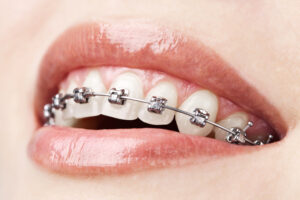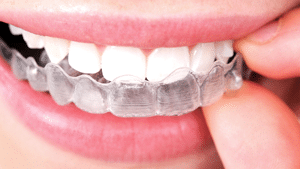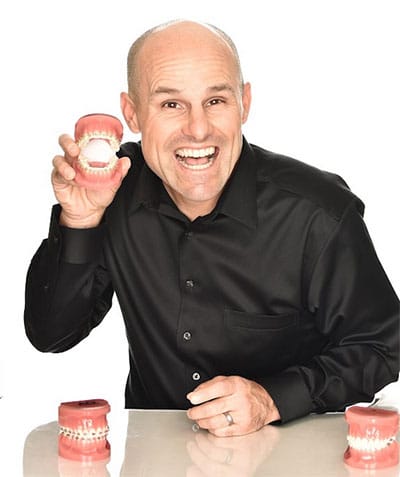Thanks to today’s advances in orthodontic technology, Embrace Orthodontics can provide our patients with more options when it comes to wearing braces than ever before. While traditional metal braces are still widely used, clear braces are very popular with teens and adults who are self conscious about wearing braces, along with Invisalign removable aligners, the “braceless” alternative to straight teeth. Dr. Kalakech will help you determine which treatment option is right for you.
Traditional Metal Braces
Traditional metal braces are the most common type of braces used today. They are smaller and more comfortable than ever before and constructed of high-grade space age metal alloys. With metal braces, you have the option of adding colored elastics (rubber bands) for a more unique and colorful smile.

Self-ligating Braces
Self-ligating braces are made from the same materials as traditional braces. However, self-ligating braces do not require the use of elastics, meaning fewer appointments and less friction being placed on the tooth. Self-ligating braces come with traditional metal, ceramic, or clear brackets. They are the same size as metal braces, but use a specialized clip in place of elastics to help the arch wire guide teeth into place. The clip helps reduce the amount of pressure being placed on the tooth, and requires fewer adjustments because there are no elastics to replace.
Gold Braces
Champagne colored braces truly offer the best of both worlds – the durability of stainless steel and the aesthetics of “white” gold. When matched with gold wire and clear elastics (rubber bands), Iconix offers a complete patient pleasing cosmetic system that requires literally no sacrifice on your part.
Ceramic (Clear) Braces
Ceramic braces are made of clear materials and are therefore less visible on your teeth than metal braces. For this reason, ceramic braces are used mainly on teenage and adult patients who have aesthetic concerns. While they are visually less prominent, they do require more attention to oral hygiene since ceramic braces are larger. The only drawback to ceramic brackets is that they are more fragile and the elastic ties can discolor between orthodontic visits with certain foods and smoking.
Invisible Braces
Clear appliances, such as Invisalign, use a series of invisible, removable, and comfortable aligners to straighten your teeth. No one can tell you are wearing those aligners because they are invisible! Invisalign aligners are removable so you are not limited in what you can eat and drink during treatment. Plus… brushing and flossing are less of a hassle. The aligners are comfortable and have no metal to cause mouth abrasions during treatment.





